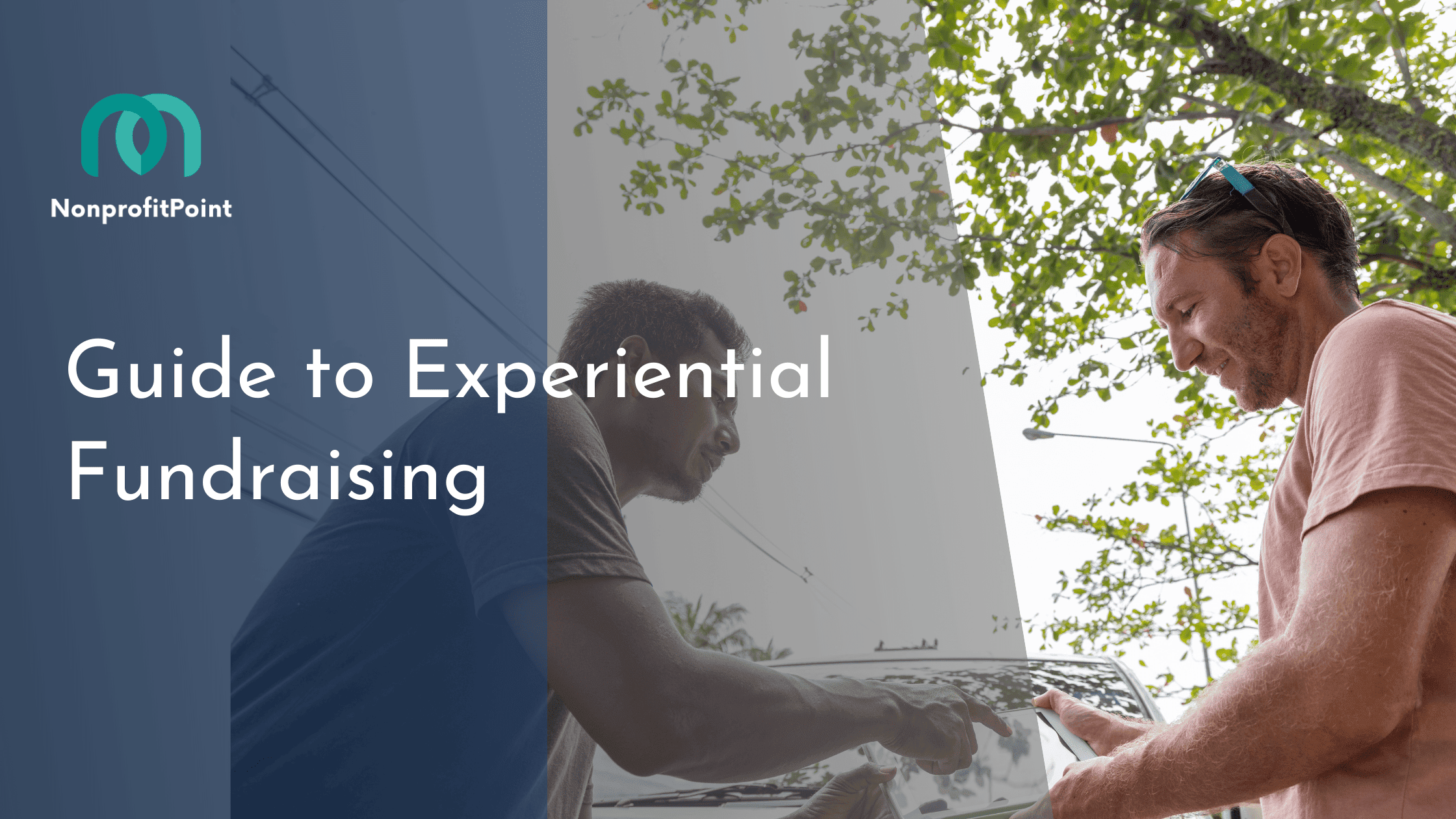Ultimate Guide to Experiential Fundraising: Crafting Memorable Journeys in Giving
In a world where digital overload often leaves us craving real-world experiences, the landscape of fundraising is undergoing a revolutionary transformation. Enter “experiential fundraising”—a fresh, dynamic approach that takes donors on a tangible journey, allowing them to witness and feel the true impact of their contributions. Gone are the days when a simple donation was enough to engage supporters.
In today’s fast-paced environment, where everyone seeks deeper connections and purpose, fundraising must evolve to be more than just transactional. It’s about crafting memorable moments that marry passion and purpose, creating a bond that goes beyond the surface.
Imagine walking in the shoes of those you’re trying to help, seeing the world through their eyes, and then being empowered to make a tangible difference. This is the promise of experiential fundraising. It’s not just about giving money—it’s about giving a piece of your heart, getting deeply involved, and becoming a part of the change you wish to see.
If you’ve ever wondered how to elevate your fundraising campaigns from mundane to magical, and truly engage with your donors, this guide is for you. Dive in and discover the future of philanthropy.
- 1. Intro to Experiential Fundraising
- 2. Historical Context
- 3. The Mechanics of Experiential Fundraising
- 4. Benefits of Experiential Fundraising
- 5. Tools and Techniques of Experiential Fundraising
- 6. Overcoming Challenges in Experiential Fundraising
- 7. Future Trends in Experiential Fundraising
- 8. Tips for Organizations Transitioning to Experiential Fundraising
- Conclusion: Beyond the Horizon of Giving
1. Intro to Experiential Fundraising

Experiential fundraising is a powerful evolution in the philanthropic world, bridging the gap between donors and causes by offering more than just a transactional relationship. At its core, experiential fundraising is about immersing donors in real, tangible experiences that align with the mission and vision of a cause.
Rather than merely making a donation online or attending a conventional fundraiser, donors are taken on an evocative journey where they can witness and feel the true impact of their contributions.
This form of fundraising is anchored in authentic donor engagement, recognizing that in our increasingly digital world, individuals yearn for deeper, real-world connections. In essence, it’s about crafting interactions that allow donors to touch, feel, and deeply understand the cause they’re supporting, making the act of giving more meaningful and memorable.
2. Historical Context

Traditional fundraising, characterized by events such as galas, direct mail campaigns, and telethons, had its era of dominance. These methods, while effective for their time, often kept a certain distance between the donor and the direct impact of their contribution.
As societal norms and technological advances evolved, so did the desire for transparency and immersive engagement in philanthropy. The rise of experiential fundraising can be traced back to the increasing importance placed on experiences in today’s consumer culture.
Whether it’s the preference for experiential travel over standard vacations or the rise of interactive events in entertainment and arts, people began to seek out meaningful and authentic experiences in various facets of their lives.
In response to this shifting paradigm, the world of philanthropy began its journey towards more immersive and authentic ways to engage donors, giving birth to experiential fundraising. This approach acknowledges the changing desires of donors, realizing that to inspire genuine commitment, one must offer more than just a cause to support, but an experience to remember.
3. The Mechanics of Experiential Fundraising
Delving into the heart of experiential fundraising requires an understanding of its core components and the principles that guide its effective execution. At its foundation, experiential fundraising seeks to forge an emotional connection between the donor and the cause.
This isn’t about momentarily tugging at heartstrings, but rather about building sustained empathy and understanding. It’s an endeavor to help donors relate deeply to the beneficiaries of their philanthropy, to feel a shared sense of humanity. Intertwined with this is the emphasis on tangible experiences, which means moving beyond mere verbal or written narratives.
Instead, it’s about creating interactive platforms where donors can witness projects firsthand, be it a school they’re helping to build, a conservation effort they’re supporting, or a community they’re empowering. Storytelling then becomes the golden thread weaving these components together.
In experiential fundraising, stories are not just told—they’re shown, felt, and lived. These stories transcend statistics and data, focusing on individual tales of change, resilience, and hope. In guiding the implementation of these components, certain key principles emerge prominently. Authenticity stands paramount; donors can discern genuine passion from mere performance.
Engagement, too, is pivotal, requiring ongoing interactions that keep donors involved and informed. Lastly, feedback loops ensure that donors witness the outcomes and impacts of their contributions, further solidifying their bond with the cause. In essence, the mechanics of experiential fundraising are about immersing donors in a journey—one where they move from passive supporters to active participants in a mission’s success.
4. Benefits of Experiential Fundraising

Experiential fundraising, when executed with authenticity and purpose, unveils a suite of benefits that elevate the entire philanthropic landscape. Central to these advantages is enhanced donor engagement.
Unlike traditional methods which often treat donations as mere transactions, experiential fundraising fosters personal connections between the donor and the cause. These intimate bonds lead not only to heightened awareness but also to increased loyalty.
Donors are not just contributors; they become ambassadors, advocates, and partners in the journey. This heightened engagement often translates into tangible financial benefits as well, leading to increased donations.
When donors see, feel, and understand the difference their contributions make, they’re not only more inclined to give generously but also more likely to engage in recurrent giving, viewing their support as a long-term commitment rather than a one-off gesture.
Beyond individual contributions, experiential fundraising also strengthens community bonds. As donors collectively partake in immersive experiences, they cultivate a shared sense of purpose and camaraderie.
This sense of community often spurs collective action, fostering group initiatives and collaborations that amplify the overall impact of fundraising efforts. Furthermore, when communities see donors actively involved and genuinely committed, it can encourage even greater local participation and ownership over projects and initiatives.
In a nutshell, the benefits of experiential fundraising ripple outwards, from individual donors to the broader community, creating a wave of positive change and sustained engagement.
5. Tools and Techniques of Experiential Fundraising
In the realm of experiential fundraising, a diverse arsenal of tools and techniques emerges, each tailored to captivate, engage, and inspire. Foremost among these are immersive events, which are not your typical charity galas or dinners.
Instead, these events might have donors participating in activities that mirror the cause they support, be it a simulated walkathon reflecting the daily treks some individuals take to access clean water or an interactive exhibition showcasing art from underprivileged communities. The goal is to let donors live a fragment of the experiences and challenges tied to the cause.
Then, we transition into the digital age with Virtual Reality (VR) and Augmented Reality (AR). These technologies transport donors to places and scenarios otherwise inaccessible.
Imagine donning a VR headset to virtually walk through a school halfway around the world that your donations are helping to build, or using AR to see a real-time projection of a forest reclamation project you’re funding. These tech-driven experiences bridge geographical barriers, making distant causes palpably close and personal.
Gamification, another potent tool in experiential fundraising, leverages the competitive and engaging nature of games to drive donations. From fundraising challenges that reward participants based on milestones achieved to digital platforms that track and showcase donor impacts in a game-like format, gamification makes the process of giving both fun and fulfilling.
In essence, these tools and techniques are not mere gimmicks but carefully curated avenues designed to immerse donors in the mission, vision, and impact of the cause. They translate the abstract nature of charitable work into concrete, relatable, and memorable experiences, ensuring that donors don’t just give, but also deeply connect and continuously engage with the cause.
6. Overcoming Challenges in Experiential Fundraising

Every innovative approach brings with it its set of challenges, and experiential fundraising is no exception. One of the common pitfalls organizations might face is the tendency to overcomplicate the experience.
In the race to make fundraising events more immersive or memorable, there’s a risk of adding too many elements, potentially diluting the core message or even overwhelming the donors. Simplifying the narrative and ensuring a clear focus on the cause is pivotal to maintaining the authenticity and efficacy of the experience.
Another challenge arises in the form of neglecting post-event follow-ups. An immersive experience can be deeply moving in the moment, but its impact wanes if there’s no subsequent engagement.
It’s essential to build upon the momentum generated during these experiences through consistent communication, updates, and feedback, ensuring that donors remain connected and feel valued long after the event concludes.
Navigating these challenges requires a combination of foresight and adaptability. To maintain authenticity, organizations must be vigilant in ensuring their experiential activities resonate genuinely with the mission at hand. Storytelling remains at the heart of these experiences, and emphasizing genuine, heartfelt narratives can be more impactful than the most elaborate setups.
Furthermore, clear channels of communication need to be established, fostering an ongoing dialogue with donors. This can range from regular newsletters updating them on project progress to personalized thank-you notes expressing gratitude for their contributions.
In summary, while the transformative potential of experiential fundraising is undeniable, its effective implementation demands mindfulness of potential pitfalls. The key lies in balancing innovation with authenticity, always keeping the donor’s journey and the cause’s essence at the forefront.
7. Future Trends in Experiential Fundraising
The landscape of experiential fundraising, much like other sectors, is in a continuous state of evolution, influenced by technological advancements, societal shifts, and emerging global priorities.
One prominent trend on the horizon is the deeper integration of new technologies into fundraising campaigns. While Virtual and Augmented Reality have made headways, we can anticipate more personalized and adaptive AI-driven experiences that cater to individual donor interests, perhaps creating narratives and simulations tailored to a donor’s past engagements and preferences.
Cross-sector partnerships also stand out as a burgeoning trend. The lines between non-profit endeavors and for-profit businesses are becoming increasingly blurred as social responsibility takes center stage.
It’s not hard to envision a future where corporations, startups, and nonprofits collaborate to craft unified experiential fundraising campaigns, each bringing their unique strengths to the table. Such partnerships could amplify reach, resources, and impact, creating a synergistic effect in both awareness and funds raised.
Additionally, with the globalized nature of our world and the interconnected challenges we face, there’s a noticeable shift towards global experiences. Experiential fundraising will likely lean into campaigns that highlight global issues, aiming to foster a sense of global citizenship among donors.
These campaigns might span continents, emphasizing our shared humanity and the collective responsibility we hold in addressing global challenges, from climate change to socioeconomic disparities.
In essence, the future of experiential fundraising is bound to be dynamic, tech-infused, and inherently collaborative, underpinned by a commitment to uniting individuals around shared values and aspirations.
As we peer into what lies ahead, it’s evident that the experiences crafted will not only aim to raise funds but also to inspire global unity and action.
8. Tips for Organizations Transitioning to Experiential Fundraising
As organizations consider the pivot to experiential fundraising, understanding the terrain is crucial to ensure a smooth and impactful transition. First and foremost, an organization must assess its readiness.
This means taking stock of current resources, capabilities, and the existing donor base. Is the team equipped with the right skill set to design and execute experiential campaigns? Are there logistical or budgetary constraints that need to be addressed before diving in?
Next comes the challenge of potential pushback. Change, even if for the better, often comes with resistance. Organizations might face skepticism from traditional donors or internal stakeholders accustomed to conventional fundraising methods.
To navigate this, transparent communication about the benefits and potential of experiential fundraising is vital. Offering evidence-based insights, perhaps from successful experiential campaigns by similar organizations, can be a persuasive tool in gaining buy-in.
Training staff and volunteers is another pivotal step. Experiential fundraising isn’t just about events or technology; it’s about weaving compelling narratives and ensuring every interaction resonates emotionally with potential donors.
Workshops on storytelling, immersive event design, or even tech-specific trainings on tools like VR and AR can empower the team to drive effective campaigns.
Lastly, crafting compelling narratives stands at the core of any experiential fundraising effort. This isn’t just about telling stories but about letting donors become part of them. Organizations need to invest time in understanding the most impactful aspects of their work and translating these into immersive, tangible experiences for donors. The narrative should be clear, genuine, and, most importantly, rooted in the mission and vision of the organization.
In conclusion, transitioning to experiential fundraising is not a mere shift in strategy but a transformative journey. Organizations must approach it with preparation, adaptability, and a deep commitment to connecting with donors in more meaningful and impactful ways. The road might be filled with learning curves, but the potential for deeper engagement and greater impact makes the journey worth every step.
Conclusion: Beyond the Horizon of Giving
Experiential fundraising isn’t just about modernizing or enhancing the act of giving; it’s a reflection of our innate human desire to connect, to belong, and to be part of stories bigger than ourselves. In an age where digital interactions often overshadow face-to-face engagements, experiential fundraising serves as a poignant reminder that philanthropy is, at its heart, a deeply human endeavor.
It beckons us to not just donate, but to immerse, to engage, and most importantly, to feel. As we stand on the cusp of this transformative journey in fundraising, one must wonder: What if the true measure of giving isn’t just in the funds raised, but in the memories crafted, the emotions evoked, and the lasting bonds forged?
Perhaps, in the future, the currency of philanthropy will not just be dollars or euros but the rich, indelible experiences that remind us of our shared humanity and purpose. As we close this chapter, let’s challenge ourselves to not just be donors, but to be participants, co-authors, and active shapers of the world’s most impactful stories.






